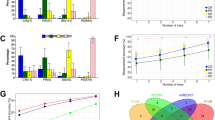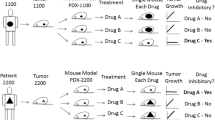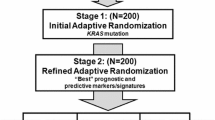Abstract
Positive results observed in preclinical animal studies rarely translate into the clinical setting, one of the major reasons for which is the subop-timal design of animal experiments. It is of vital importance to the success of a preclinical study to maintain the balance of potentially prognostic factors in all of the treatment cohorts. Various randomization methods have been proposed to increase the likelihood of having balanced prognostic factors at the end of a clinical trial where patients are randomized sequentially, whereas few approaches exist in the literature for preclinical studies where all the animals need to be randomized simultaneously prior to the start of the study. A flexible approach to allocating animals to treatment cohorts in a preclinical study such that the optimal balance of multiple prognostic factors can be achieved is proposed, which allows the prognostic factors to be ranked as needed and can handle both continuous and categorical factors. In the proposed approach an overall imbalance score for the study is first defined based on pairwise comparisons of rank statistics among the treatment cohorts, and then the imbalance score is optimized via a well-known local optimization method. Simulation results show that the proposed method significantly outperforms the standard randomization approach.
Similar content being viewed by others
References
Bebarta V, Luyten D, Heard K. Emergency medicine animal research: does use of randomization and blinding affect the results? Acad Emerg Med. 2003;10:684–687.
Hackam DG, Redelmeier DA. Translation of research evidence from animals to humans. JAMA. 2006;296:1731–1732.
Hackam DG. Translating animal research into clinical beneft. BMJ. 2007;334:163–164.
van der Worp HB, Howells DW, Sena ES, et al. Can animal models of disease reliably inform human studies? PLoS Med. 2010;7(3):e1000245.
Weaver J. Animal studies paint misleading picture. Nature. March 20, 2010; doi:10.1038/news.2010.158.
Taves DR. Minimization: a new method of assigning patients to treatment and control groups. Clin Pharmacol Ther. 1974;15:443–453.
Pocock SJ, Simon R. Sequential treatment assignment with balancing for prognostic factors in the controlled clinical trial. Biometrics. 1975;31:103–115.
Frane JW. A method of biased coin randomization, its implementation, and its validation. Drug Inf J. 1998;32:423–432.
Kang M, Ragan BG, Park JH. Issues in outcomes research: an overview of randomization techniques for clinical trials. J Athletic Train. 2008; 43:215–221.
Kao LS, Tyson JE, Blakely ML, Lally K P. Clinical research methodology I: introduction to randomized trials. J Am Coll Surg. 2008;206:361–369.
Jiang H, Liu Y, Su Z. An optimization algorithm for designing phase I cancer clinical trials. Con-temp Clin Trials. 2008;29(2):102–108.
Aarts EHL, Korst JHM, van Laarhoven PJM. Simulated annealing. In: Aarts EHL, Lanstra JK, eds. Local Search in Combinatorial Optimization. New York: John Wiley; 1997.
Johnson DS, Aragon CR, McGeoch LA, Schevon C. Optimization by simulated annealing: an experimental evaluation. Part 1: graph partitioning. Oper Res. 1989;37:865–892.
Hoos HH, Stutzle T. Stochastic Local Search: Foundations and Applications. New York: Elsevier; 2004.
Spall JC. Introduction to Stochastic Search and Optimization: Estimation, Simulation, and Control. New York: Wiley; 2003.
Author information
Authors and Affiliations
Corresponding author
Additional information
The authors report no relevant relationships to disclose
Rights and permissions
About this article
Cite this article
Su, Z. Optimal Allocation of Prognostic Factors in Randomized Preclinical Animal Studies. Ther Innov Regul Sci 45, 725–729 (2011). https://doi.org/10.1177/009286151104500508
Received:
Accepted:
Published:
Issue Date:
DOI: https://doi.org/10.1177/009286151104500508




